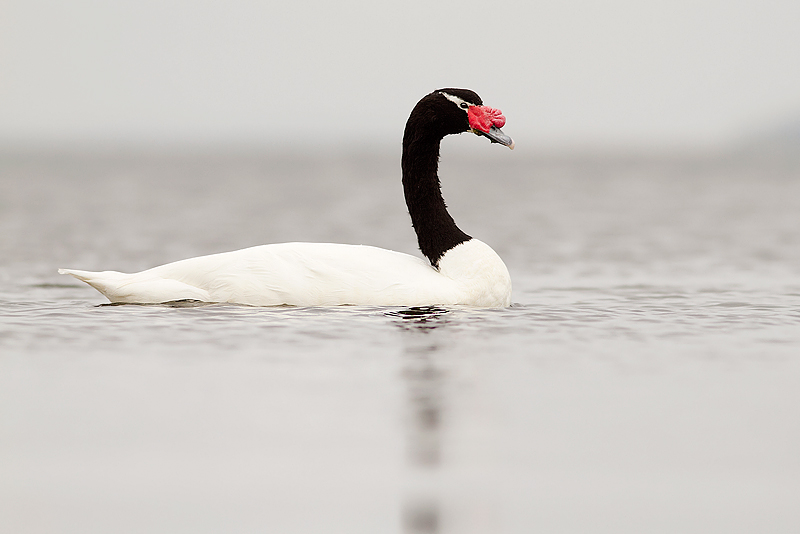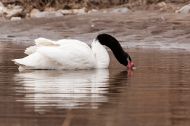Black-necked Swan
Cisne de Cuello Negro
Cygnus melancoryphus
Length: 1200mm. Sexes alike. Bill dark bluish grey with whitish pink nail; red caruncle at the base of maxilla, the lores being also red; iris dark brown; thin white line from the forehead, around the eye and extending towards the back of the head; this same band goes from the eye ring before malar region to the chin, which is also white; rest of head and four fifths of neck black; plumage of the body, lower neck, wings and tail pure white; legs are pink.
The female has similar coloration but is slightly smaller. Juveniles or immature do not have caruncle, the base of the bill is pale red, the head and neck are blackish brown, rest of plumage is white with rusty brown speckles above and on flanks and uppertail coverts; tip of primaries spotted blackish brown.
Habitat and behaviour: it favours ponds, lakes and broad slow-moving rivers and during migration it often appears on the sea coast. Usually seen swimming; when it leaves the water it remains close to the water’s edge; gregarious, it may be found both in small groups and very large flocks. On account of its size and weight, to become airborne it must taxi along for quite a distance. Once in the air it flies quickly and its vigorous wing beats produce a sound that can be heard over long distances; it utters a characteristic whistle in flight.
It feeds basically on aquatic vegetation. Normally breeds between August and November, but under favourable conditions it has an extended breeding season; it nests among thick water vegetation, mainly reed beds. The nest consists of a wide platform made with reeds and lined with large quantities of down; clutch size is three to five, seldom seven cream white eggs. Only females perform brooding duties. Chicks are born with a coat of pure white down speckled grey above. Both parents tend the chicks and carry them on their back.
Range: widely distributed throughout Patagonia from Río Negro and Neuquén to Tierra del Fuego; an occasional visitor to Islas Malvinas; most of the southern populations migrate to the north in winter.
Illustrated Handbook of the Birds of Patagonia
Kindless: Kovacs Family |











